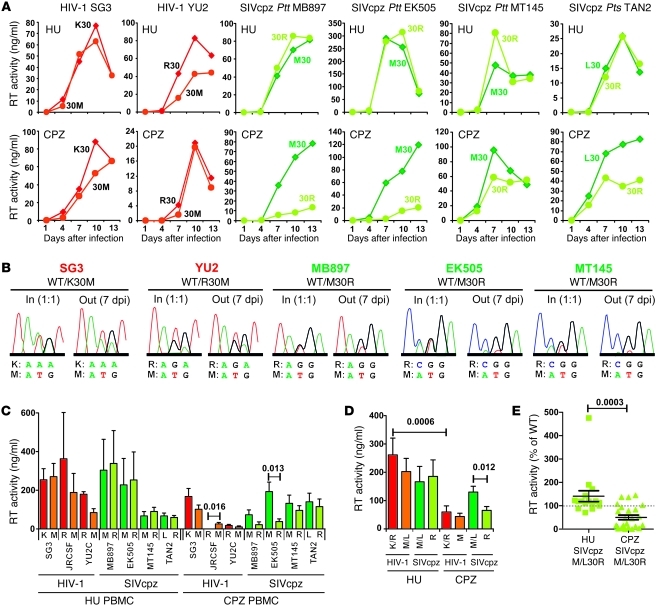Figure 3. Replication potential of WT and Gag30 mutant HIV-1 and SIVcpz in human and chimpanzee CD4+ T lymphocytes.
(A) Replication kinetics are shown for isogenic pairs of WT and Gag30 mutant HIV-1 (red) and SIVcpz (green) clones in human (HU) and chimpanzee (CPZ) CD4+ T lymphocytes. Each virus pair was tested in cells from 6 chimpanzee and 4 human donors by measuring RT activity in culture supernatants (one representative curve is shown). (B) Competition of WT and Gag30 mutant HIV-1 and SIVcpz constructs. Human CD4+ T cells were infected with virus stocks that were normalized for p24 content and mixed at a 1:1 ratio. Sequence chromatograms of RT-PCR amplification products obtained from the input virus and cell culture supernatants collected at 7 days after infection are shown. (C) Cumulative virus production over 13 days of culture in CD4+ T lymphocytes from 4 human (left) and 6 chimpanzee (right) donors infected with the indicated HIV-1 or SIVcpz variants. Data are shown as mean ± SEM. (D) Mean production of HIV-1 or SIVcpz constructs containing an R/K or M/L at Gag30 in human- or chimpanzee-derived CD4+ T cells. Data are shown as mean ± SEM obtained for all 3 HIV-1 and 4 SIVcpz strains analyzed. (E) Replication of SIVcpz M/L30R mutants in human and chimpanzee cells. Cumulative RT production levels of the Gag30 mutants are shown in relation to those of their parental constructs set to 100%. WT JRCSF and YU2C strains did not replicate at detectable levels in most chimpanzee cells, thus precluding a direct comparison.

